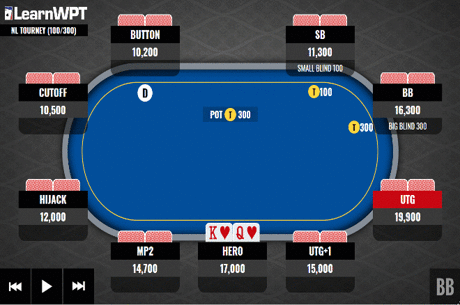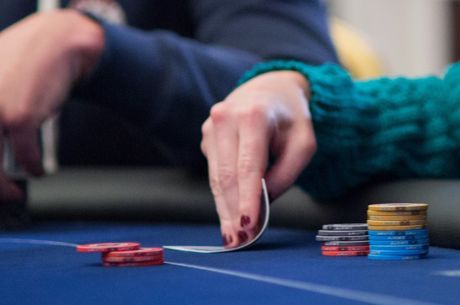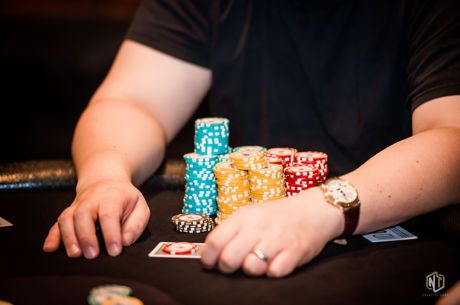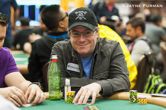Using Tells in the Real World: Me and Mr. Bond
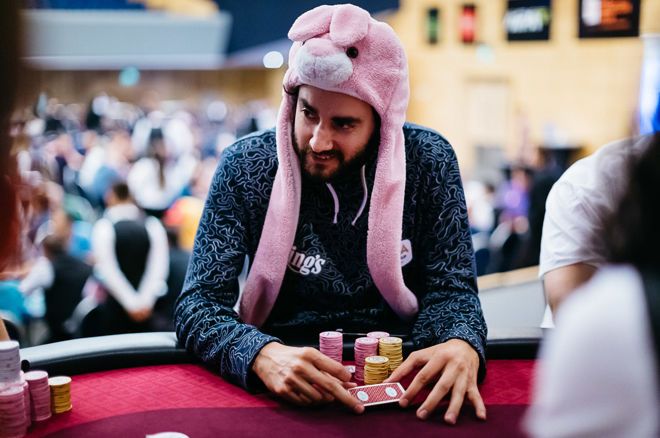
"Oops... you must have thought I was bluffing, Mr. Bond."
You remember the line. That's the villainous Le Chiffre talking just after he stacks James Bond in the 2006 version of Casino Royale, knocking him out of the $10M tournament and forcing our hero to re-enter for another $5M.
In truth, it didn't matter whether or not Bond thought Le Chiffre was bluffing. In the hand Bond held a full house, kings full of aces, when he called off his stack following his opponent's river shove. He was going to get it all in regardless, destined to lose to Le Chiffre's quad jacks. Yet the filmmakers try to present Bond's call as a misread of an eye-twitch tell from his opponent �� that is, a super-sophisticated "reverse tell" by Le Chiffre.
Just as in most Hollywood movies, the villain wins the first battle. And also, when it comes to poker, tells are exaggerated well beyond what really happens at the tables.
Let's talk about an example of how tells work outside of the movies.
Introduction
My name is Eyal Bensimhon. I am 34 years old, and last year I decided to leave my job in order to fulfil my dream to become a poker pro. Unlike all the poker internet kids, I don't have a lot of online experience and I am certainly not a kid anymore. And when it comes to live poker, my story is a bit different from most as well.
Over the past two years I've earned about $600,000 in live tournaments and won two World Series of Poker Circuit rings. I also finished as the runner-up in the WSOP International Circuit Main Event in Rozvadov last fall, and have managed to win a few other tournaments as well.
My success has been influenced by two major elements:
- Game selection. I focus on low buy-in tournaments (average buy-in of $550) �� that is, tournaments which attract the most amateurs and in most cases have at least half a million as guaranteed prize pools.
- Reading my opponents' behavior and in response trying to affect them in one way or another.
To explore the latter, I want to present to you a hand which was significantly influenced both by live tells and table talk.
Trying to Read Mr. Bond: Context and Preflop
The hand was played during the Spanish Poker Festival at Kings Casino in Rozvadov. It was a �350 buy-in tournament, with a great structure and a �500K guaranteed prize pool.
It is the second day and the bubble already burst. The blinds are 20,000/35,000 and I open from the button with 8?6?. The small blind folds and the big blind �� none other than a German player known as "Mr. Bond" �� decides to call.
I had played with Bond before. He is a very sympathetic guy and it is quite fun to sit with him at the table. We talk a lot, so a dynamic has developed between us. I categorize him as a good recreational player who sometimes has the tendency to tilt. Although his suit and his unique style and appearance gives him the image of a solid player, I know that he is capable of making strong moves as well as to bluff, and he is not afraid of risking his stack.
At this moment Bond is leading the table after having won a few important hands and flips in the last hour. He seems confident and is pretty relaxed and chill. (Could he be experiencing "positive tilt," I wonder?) We have been conversing a lot and he has been agreeable to my table talk.
Trying to Read Mr. Bond: Postflop and a River Decision
Back to the game.
The flop comes K?8?6? which gives me two pair. Bond checks and I bet 30 percent of the pot �� 60,000 into 200,000.
The reason I bet is obviously for value. When I reevaluate the situation now, I think I should have bet more. Any hand that hits that flop or any draw would make Bond call, and since it is a wet board I don't want to give him cheap equity. Indeed, Bond calls pretty quickly.
"Quick calls in general indicate a medium-strength to weak hand" says Zachary Elwood, author of several books on poker tells and creator of the Reading Poker Tells video series (which I highly recommend), when I asked him for advice via email about this hand.
"Also, a lesser-known thing that I talk about in Exploiting Poker Tells: this will tend to make draws less likely, because if he had, for example, an ace-high diamond draw, he'd most probably think about raising (even if he almost always just calls)," Elwood continues. "So the quick call here, for any somewhat aggressive/decent opponent, will tend to make draws less likely."
The turn brings a pretty bad card for me �� the 10? which completes a straight and a flush. To be honest, I expected Bond to check, but suddenly he decided to lead out for almost half a pot �� 150,000 into 320,000.
With that bet he put me in an uncomfortable situation as I assumed that no matter what was going to happen, if I call, I will probably be calling another bet from him on the river, whether it be for value or a bluff. I think for a short while and then call, bringing the pot to 620,000.
The Q? comes on the river, making the final board K?8?6?10?Q?. After pausing for a few moments and staring at me, Mr. Bond decides to bet 275,000. Although my original plan was to call a relatively small bet, I still want to make sure I am making the right decision before doing so. After all, there is no value hand that Mr. Bond bets that I can beat �� my hand is actually a bluff catcher.
I think about how he looked at me before he bet. What does Zachary say about that behavior?
"The Caro/common school of thought is that bluffers tend to stare more after betting, but I actually disagree with that," says Elwood. "I think most players will make more eye contact after betting strong hands, and avoid eye contact with bluffs. Also, eye looseness/movement is a big factor. In this case, he was quite restrained/non-dynamic in his eye contact/staring. That's one piece of evidence in favor of him being more likely to bluff, but a small one."
I was 95 percent sure he was bluffing. I am going make the call. But I wanted to get the extra 5 percent, just to be sure. I needed a little more information. And what's the best way to gain more information? To start talking.
"What is this bet, Mr. Bond?" I ask. "Are you bluffing me? I have a very strong hand."
We converse a little bit, with enough time passing to make him feel a little more tension. I make one last joke and see his fake smile �� a fake smile that in most cases indicates weakness.
Could Mr. Bond �� or anybody else, for that matter �� be capable of giving off so many reverse tells, like Le Chiffre supposedly does? Not in these low buy-in tournaments, I surmise, and I make the call.
"Good call," says the gentleman as he turns over 3?3?. You can watch the hand play out below:
Conclusion
In my opinion, live tells and table talk are the most fascinating elements in poker. In my case, they are probably also among the most valuable things that happen at the table.
Studying this field can be worth a lot of money to any poker player, especially in the low buy-in games. Yet there are only a few who choose to master this skill, with most players diminishing its importance, referring to as something extra that only occasionally comes up to help you make a better decision in a close spot.
In future articles, I will try to explore this topic further and give you a taste of this super interesting �� and potentially useful �� part of poker.
My next stop is going to be the Italian Poker Series at Kings Casino in Rozvadov (May 23-27) where I'll be playing the �350 Main Event with a �500,000 guarantee. Hope to see you there!
For more poker content from Eyal Bensimhon, follow him on Instagram at poker_bunny_.

